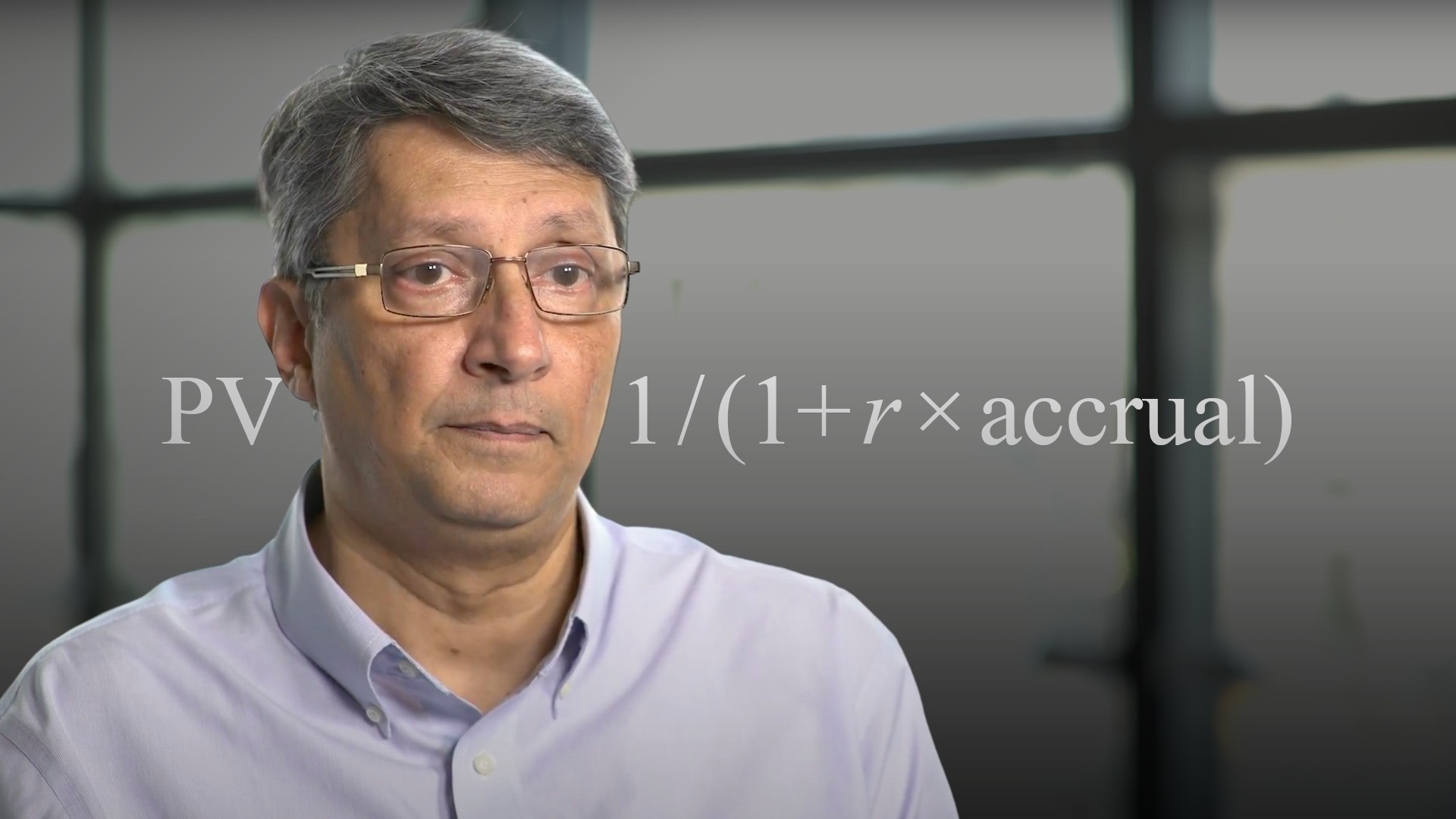
Discount Factors (Money Markets)

Abdulla Javeri
30 years: Financial markets trader
In this video, Abdulla explains discount factors as they specifically apply to money markets.
In this video, Abdulla explains discount factors as they specifically apply to money markets.
Subscribe to watch
Access this and all of the content on our platform by signing up for a 7-day free trial.

Discount Factors (Money Markets)
3 mins 46 secs
Key learning objectives:
Knowing the PV formula for money markets and understanding the terms
Overview:
The discount factor used to calculate the present value of a money market fund must take into account the accrual time of the fund. This discount factor is used specifically for the money market, where securities mature in less than one year (so the formula has no exponents).
Subscribe to watch
Access this and all of the content on our platform by signing up for a 7-day free trial.
Knowing the PV formula for money markets and understanding the terms
The money market, the market for short-term fixed-rate loans and deposits, deals with single periods of less than a year, so the TVM formula has no exponents:
PV = CF/(1 + r x days/base)
- PV is the present value of a cash flow (CF) that occurs in the future
- r is the nominal annual interest rate
- days refers to the actual number of days to the cash flow
- base is the number of days in the year (which depends on the currency of the cash flow)
Days/base is referred to as the accrual. The two major money market conventions for calculating accruals are Actual over 365 and Actual over 360. Discount factors are used all the time for interest and yield calculations as well as the valuation of securities. The formula can be re-written and simplified to:
PV = CF/(1 + r x accrual) -- or -- PV = CF x 1/(1 + r x accrual)
The term to the right of the multiplication sign is the discount factor and can be calculated separately. The present value of a cash flow receivable or payable in the future is the cash flow multiplied by the discount factor.
Subscribe to watch
Access this and all of the content on our platform by signing up for a 7-day free trial.

Abdulla Javeri
There are no available Videos from "Abdulla Javeri"



























